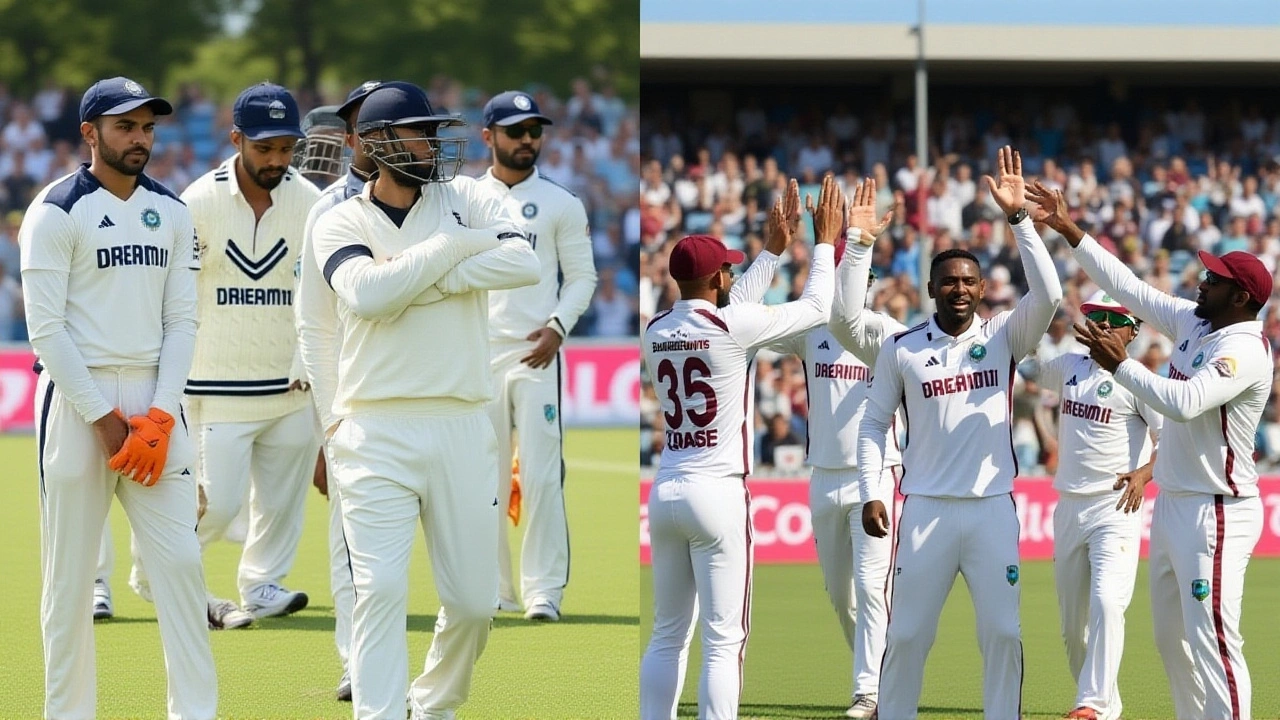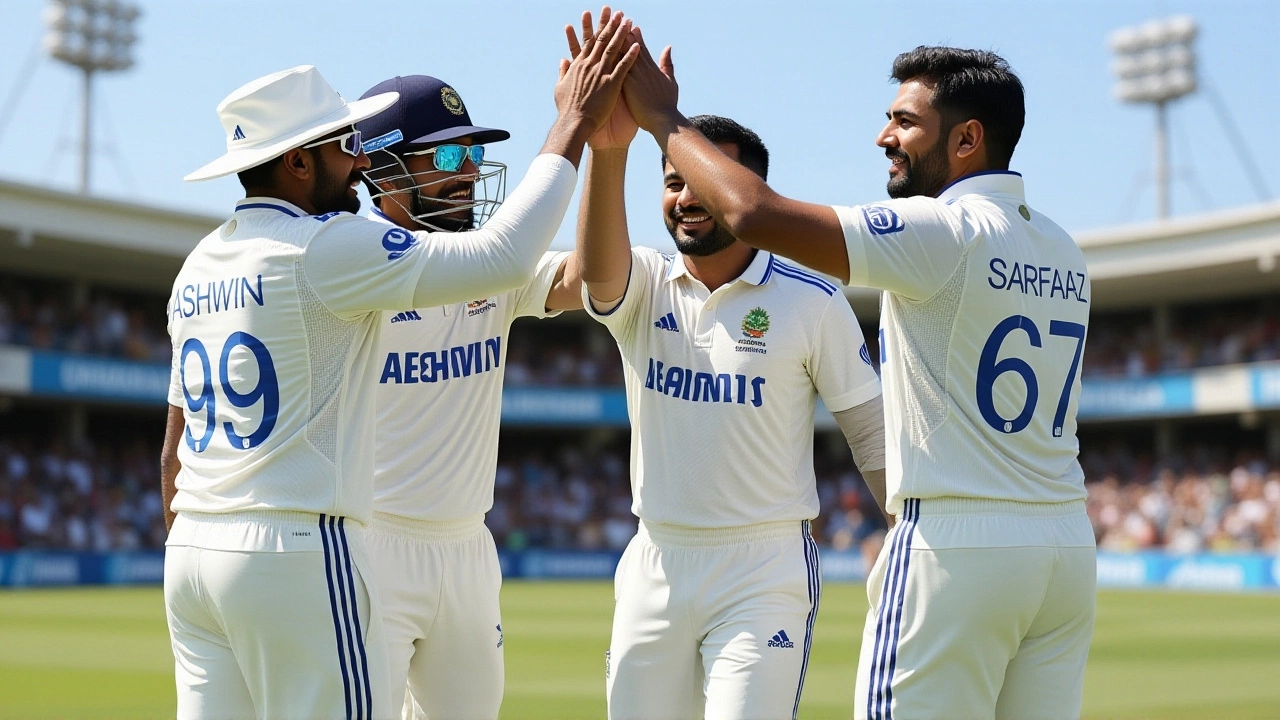When Smriti Mandhana and Pratika Rawal stepped onto the pitch at Navi Mumbai on Sunday, November 16, 2025, no one expected them to rewrite history — but they did. India Women’s 340 for 3 in 49 overs, powered by a record-breaking 212-run opening stand, crushed New Zealand Women by 53 runs via the Duckworth-Lewis-Stern (DLS) method in the 24th match of the ICC Women's Cricket World Cup 2025. The win didn’t just secure a spot in the semi-finals — it announced India as serious title contenders after a shaky start. Rain had cut the innings short, but India turned adversity into opportunity, turning what could’ve been a frustrating pause into a masterclass in patience and power.
A Partnership That Changed the Tournament
The opening stand between Mandhana and Rawal wasn’t just big — it was historic. At 212 runs, it became the highest opening partnership in ICC Women's Cricket World Cup history for India, surpassing the previous record of 198 set in 2017. Mandhana, the vice-captain, played with controlled aggression, smashing 109 off 95 balls with 14 fours and 4 sixes. Rawal, playing her first World Cup, delivered a career-defining 122 off 134, her first century on the global stage. Their timing was flawless. After a slow start — India took 16 overs to reach their first boundary, the longest wait in this tournament — they exploded. One over, bowled by Amelia Kerr, yielded 12 runs: a six over deep midwicket from Mandhana, followed by a crisp boundary through backward point from Rawal. The crowd roared. The scoreboard blinked. The message was clear: India meant business.New Zealand’s Fight, Cut Short by Rain and Reality
New Zealand, needing a win to keep their semi-final hopes alive, had a chance. Captain Sophie Devine won the toss and chose to field — a gamble that backfired. Her team started well, with Maddy Green playing a blistering 74 off 62 balls, including a brutal over against Kranti Gaud that brought 10 runs in a single over. But the target was too steep, and the weather had other plans. Rain interrupted New Zealand’s chase at 130 for 4 in 24 overs. When play resumed, the DLS method recalculated the target to 324 from 40 overs. Even then, New Zealand couldn’t keep up. They finished at 271 for 2 — a respectable total on any other day, but 53 runs short under the revised calculation. The numbers didn’t lie: India’s batting depth, led by Jemimah Rodrigues’ 54 off 38 balls, was simply too much.
From Humiliation to Heroics: India’s Turnaround
This wasn’t the same India team that lost their opening match by 89 runs to Australia. That defeat had sparked quiet doubts. Was the team too reliant on Mandhana? Was the middle order fragile? The ICC Cricket website called this performance “a complete all-round effort,” and rightly so. The bowling unit — led by Deepti Sharma’s economical 10 overs for 32 runs — held firm under pressure. The fielding was sharp. Even the spinners, often criticized for inconsistency, held their line. BCCI.tv’s match highlights showed Rawal’s century being celebrated with tears — a moment that echoed far beyond the stadium. For the first time since 2017, India’s women are heading into the semi-finals with momentum, not just hope.What This Means for the Tournament
With this win, India join Australia, South Africa, and England in the semi-final bracket. New Zealand, now with just one match left against Bangladesh, need a miracle to stay alive. Their net run rate is in freefall. Meanwhile, India’s victory has shifted the entire narrative. The Board of Control for Cricket in India (BCCI) is now being hailed for its investment in women’s cricket — the infrastructure in Navi Mumbai, the training facilities in Bengaluru, the domestic circuit that produced Rawal — all paid off. The Navi Mumbai Cricket Stadium, once a secondary venue, became the epicenter of a national celebration. For the first time, women’s cricket in India didn’t feel like a footnote — it felt like the headline.
What’s Next?
India’s next challenge is the semi-final, likely against Australia or South Africa — both formidable opponents. But this team has found its rhythm. Mandhana’s leadership, Rawal’s emergence, Rodrigues’ finishing — they’re no longer a squad trying to prove themselves. They’re a team that believes. And if they keep batting like this, no one will be able to stop them. The final, scheduled for December 12 in Ahmedabad, is no longer a distant dream. It’s a destination.Frequently Asked Questions
How did the DLS method decide the winner in this match?
Rain interrupted New Zealand’s chase at 130 for 4 in 24 overs, triggering the Duckworth-Lewis-Stern recalibration. India’s original target of 340 in 50 overs was adjusted to 324 in 40 overs based on wickets lost and overs remaining. New Zealand finished at 271 for 2 in 38 overs — 53 runs short of the revised target, confirming India’s win under DLS rules, which prioritize fairness over raw totals.
Who are Smriti Mandhana and Pratika Rawal, and why is their partnership significant?
Smriti Mandhana, India’s vice-captain, is one of the most consistent openers in women’s cricket, while Pratika Rawal, a 24-year-old from Maharashtra, was playing her first World Cup. Their 212-run stand is the highest opening partnership by India in Women’s World Cup history, surpassing the previous record of 198. Rawal’s century was especially remarkable — her first in a World Cup, and it came under immense pressure.
Why was this match played in Navi Mumbai and not a bigger stadium?
The Navi Mumbai Cricket Stadium is one of several venues selected by the BCCI for the 2025 World Cup to decentralize matches and boost regional engagement. Though smaller than Mumbai’s Wankhede, it has hosted multiple women’s internationals since 2022 and offers excellent facilities. The packed crowd — over 22,000 — proved the demand for women’s cricket is growing beyond traditional hubs.
What impact does this win have on India’s chances in the final?
This victory gives India momentum and confidence. After losing their opener, they’ve now won three straight matches with dominant batting performances. Their top order is firing, their spin attack is disciplined, and they’re playing with freedom. If they avoid early collapses in the semi-final, they’re strong favorites to reach the final — especially if they face South Africa, whose bowling lacks the firepower to contain India’s depth.
How did New Zealand’s campaign unravel after this loss?
New Zealand’s net run rate dropped to -0.87 after this defeat, and with only one match left against Bangladesh, they need to win by a massive margin while hoping for other results to go their way. Their top order has been inconsistent, and their bowling lacks penetration against strong batting lineups. Their elimination is now highly likely — a bitter end to what was expected to be a title challenge.
What role did the BCCI play in India’s success in this tournament?
The Board of Control for Cricket in India (BCCI) has invested heavily in women’s cricket since 2021 — increasing match fees, launching the Women’s IPL, and expanding domestic pathways. Rawal, for instance, came through the Maharashtra state system funded by BCCI grants. The organization’s decision to broadcast matches on BCCI.tv and promote them nationally helped build fan support, turning this match into a cultural moment, not just a sporting one.
